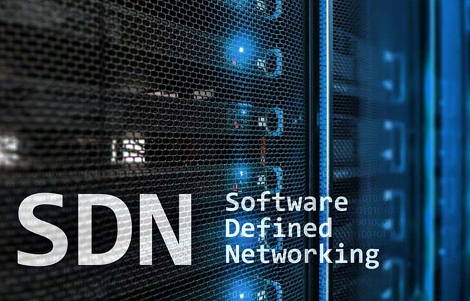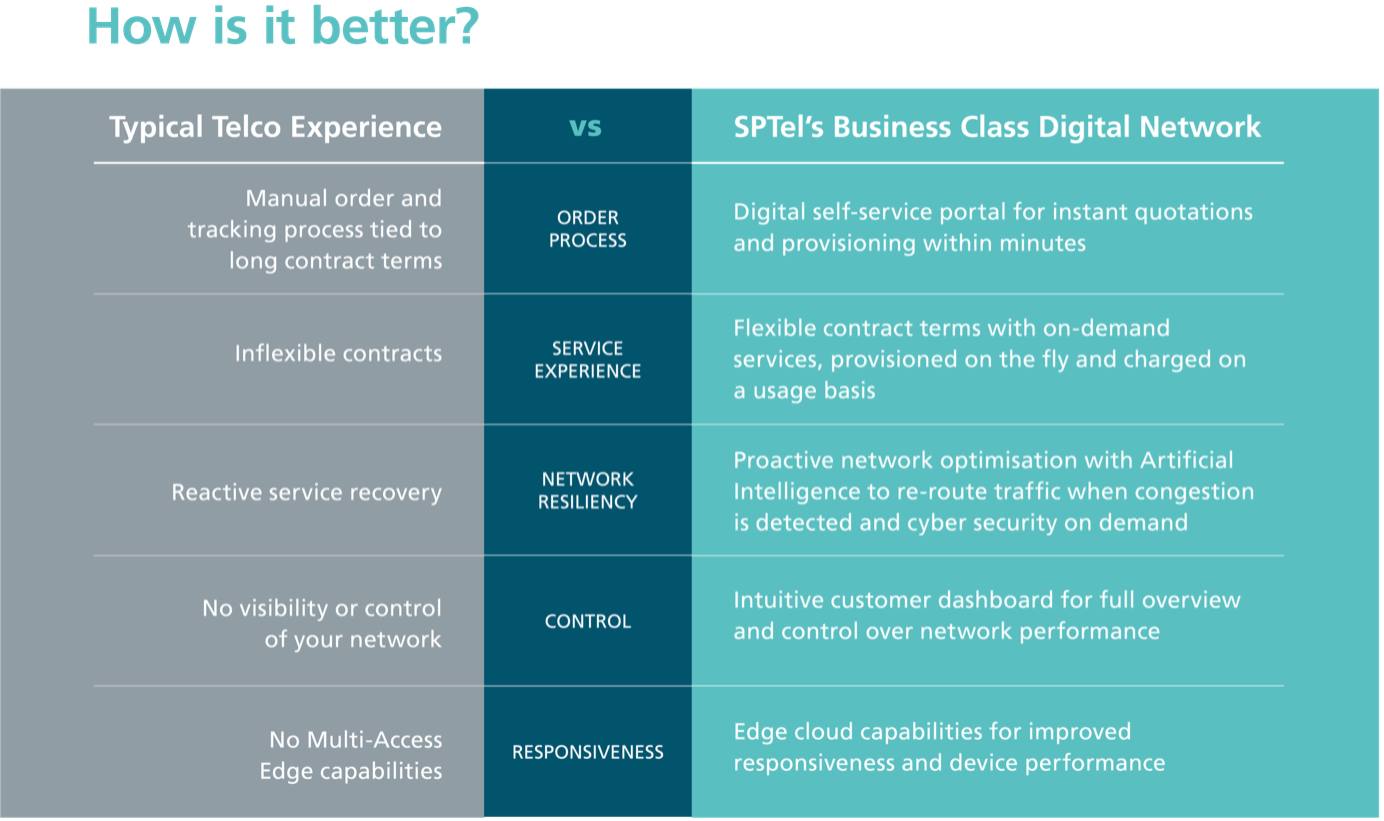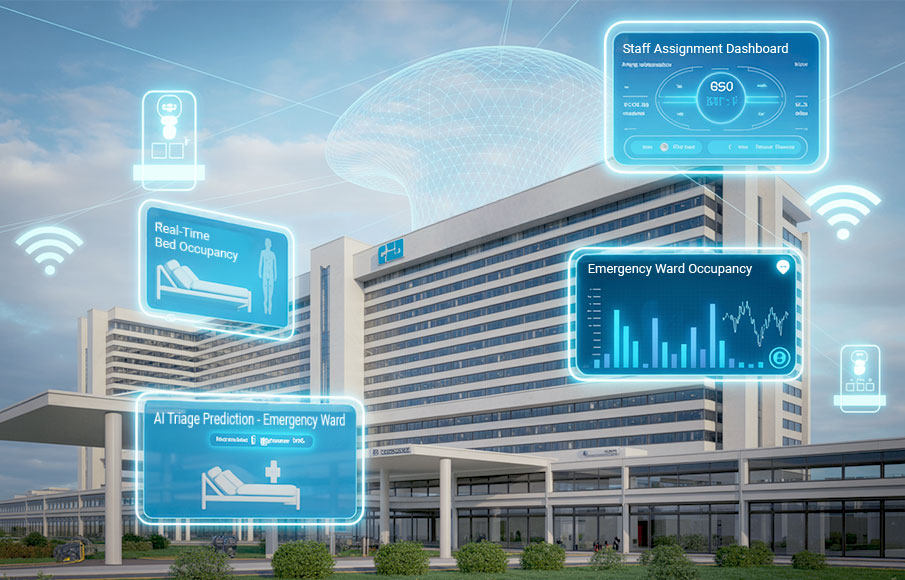What is a Software-Defined Network and How Can it Benefit You?
- 12 January 2022

Developed in 2011, software defined networks (SDN) have been in use by some of the top corporations and service providers around the world. According to the Global Networking Trends, SDN has seen a reasonably high rate of adoption with data centers at 64%, access networks at 40%, and WANs (Wide Area Network) at 58%. But what is SDN exactly and what are it’s strengths?
This article will walk you through everything that you need to know about SDN, the difference between SDN and traditional network models as well as the benefits your business can derive by opting to partner with a ready SDN.
The SDN technology has been in use since 2011, along with the OpenFlow protocol. According to the Global Networking Trends, SDN has seen a reasonably high rate of adoption with data centers at 64%, access networks at 40%, and WANs (Wide Area Network) at 58%.
The bottom line of this definition is that SDN separates the network control and data planes (switches), allowing control to be done from a centralized point. Having understood what SDN architectures are, we should now look at a detailed explanation of how the system really works.
How does a Software Defined Network work?

Software-defined Network (SDN) is a software-based network solution that enables network administrators and users to connect directly to applications via APIs (application programming interfaces). It is the physical decoupling of the packet-forwarding and control planes within a network.
By separating the control plane from the data plane, these network services allow your telco provider to control several devices from a single control plane. This helps to support the performance and security of the applications as well as create a dynamic and flexible network architecture.
SDN (software-defined networking) uses the following components:
- Controller: the SDN controller is the primary element of the software-defined networking (SDN) architecture that enables policy enforcement, centralized network management and control, and automation across multiple physical and virtual network environments. The SDN controller can be regarded as the backbone of software-defined networks.
- Southbound APIs: these are the most commonly used protocols. They move information from the individual network devices to the controller and from the controller back. The individual networking devices include routers, access points, firewalls, and switches.
- Northbound APIs: These APIs transmit information from the controller to the application & policy engines and back. With this activity, SDN appears to be a single logical network device. The result of this is well-rounded network traffic and adequately distributed services.
In essence when a packet arrives at a data plane device (switch), the switch determines the destination of the packet with the help of packet-handling rules that have been sent to the switch from the SDN controller.
The then switch forwards a request to the controller for guidance and also informs the controller of the class of traffic it is transporting. This supports the virtualizing of network functions, enabling them to boost innovation and speed up TTM (time to market) for all applications.
Troubleshooting network issues with SDN also comes with an increased level of ease and speed as the technology offers the telco provider higher visibility over their entire network, resulting in faster pinpointing of issues and fault resolution.
How is SPTel’s end-to-end Software Defined Network Different?

SDN is not a new solution in the market and telcos that have adopted SDN have done so with the intention to deliver more seamless services and faster troubleshooting for their customers.
However, SPTel is taking this a step further by extending these benefits to the end user as well. That is why we have invested in automation and digitalised our services with a front end customer portal with service chaining in the back end so that customers can have direct access to the strengths that SDN can deliver.
Benefits of a Software Defined Network from SPTel

Here’s why you should choose an SDN solution on SPTel’s unique and diverse fibre network:
1. Control anywhere, anytime
With SPTel’s automation and frontend customer portal, your IT support team can react faster and more effectively to business changes as the network is just as accessible to you as it is to us.
Though the customer portal dashboard, you’ll have full visibility over your network utility and spends. Our usage report also provides information on bandwidth utility trends so that you can make decisions on how to further optimise your network capacity.
You’ll also be assured of greater proactivity from us when it comes to keeping you up to date. This is because subscription status’ will be updated in real-time via the portal and you will also receive alerts if certain network thresholds are hit.
Best of all, this can be accessed anytime, anywhere by your IT team simply by logging on to the customer portal.
2. On-demand solutions
With the customer portal, you can be assured that you can react to changing business demands quickly with on demand solutions such as cybersecurity and bandwidth.
With SPTel’s automated processes and order flow supported by a software-defined network, dynamic resource allocation is made possible. This means you can choose to turn on additional bandwidth as needed with a few clicks of a button. The service is so flexible that you can even request for additional bandwidth for as short as 1 hour.
This reduces your need to oversize your network unnecessarily to cater for sudden network traffic surges. You’ll also be able to deliver more consistent and reliable services to your end customer.
3. Improved security
This on-demand capability extends to cyber security as well and leads to improved network security for your business.
We start off with an inherent clean pipe network that automatically alerts end users when DDoS attacks are detected on their network. This pro-active alert allows you to react to threats quickly. On top of that, on demand DDoS mitigation is also supported, ensuring you do not get caught unprepared.
Provisioning of additional managed cybersecurity features like virtual web application protection and virtual firewall is also faster than ever before. This process would have taken days with traditional networking but can now be provisioned in just hours with SPTel’s SDN.
4. Faster processes
With the automation enabled by SPTel’s customer portal, customers can receive instant quotations and network diagrams without having to spend time and effort to contact account managers manually. This reduces time spent on manual processes and incidents whereby human errors may occur. Increasing the accuracy and speed in which your orders and requests can be processed and delivered.
How does a Software Defined Network with Digitalised Services support Edge Computing and IoT?

Edge computing is the general notion that pushing data processing closest to where data is generated (the edge) reduces the need for data to always be uploaded to a private data center.
SDN technology enables the flexible and scalable deployment of edge cloud computing resources. It bridges the gap between traditional network resources and edge computing.
Edge computing, on the other hand is the middleman between on-premise network solutions and cloud infrastructure, bringing you the best of both worlds. This means that edge computing allows you to enjoy the highest level of latency and control and the ease of affordability all in one. This is where SPTel’s SDN stands.
SPTel has a large number of hubs everywhere on the island, helping you to get closer and reach the events events or people that you serve with your networks.
SPTel’s SDN controllers come with built-in artificial intelligence that senses periods of high network utilization. By doing this, the controller can further process traffic data at the edge to eliminate network issues.
SPTel’s SDN architecture also allows end-users to pile on multiple Internet of Things (IoT) resources without concerns as to whether there will be sufficient bandwidth to manage network traffic.
Experience Improved Network Infrastructure with SPTel’s Software-Defined Solutions
SPTel’s integrated end-to-end SDN offering provides companies with the necessary technological expertise and flexibility to tackle the challenges of tomorrow. When selecting a partner for your digitalisation needs, select an SDN provider that can deliver:
Visibility and Control: Full visibility over the network functions, utility, and cybersecurity protocols with a customer portal dashboard. In addition, they have the power to make changes anywhere, at speed, from an online portal.
Improved total cost of ownership: with dynamic resource allocation, so customers can scale their bandwidth as needed, on demand.
Enhanced Cybersecurity: With clean pipe capabilities and managed security services that can be provisioned on demand
Faster processes: With direct access to all network information through the customer portal, companies are only a few clicks away from receiving a quotation. Eliminating manual processes.
The time for one-size-fits all telco offerings are over. It’s time for your needs to be supported by a business class digital network.
Come experience the new era of telecommunications with SPTel’s Business Class Digital Network.














